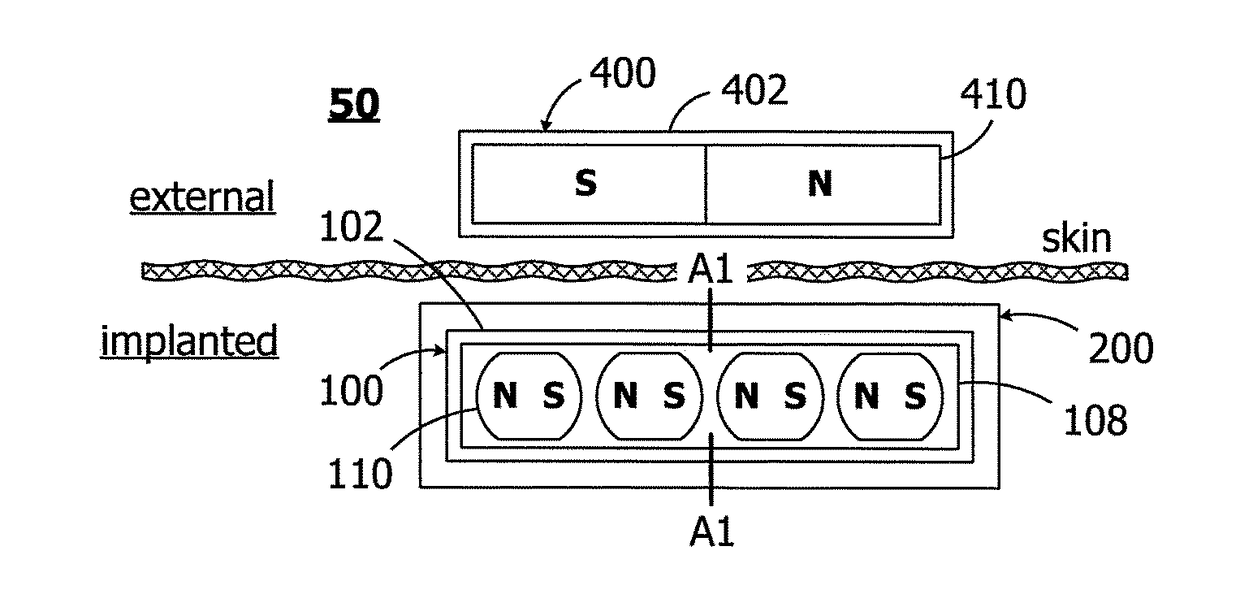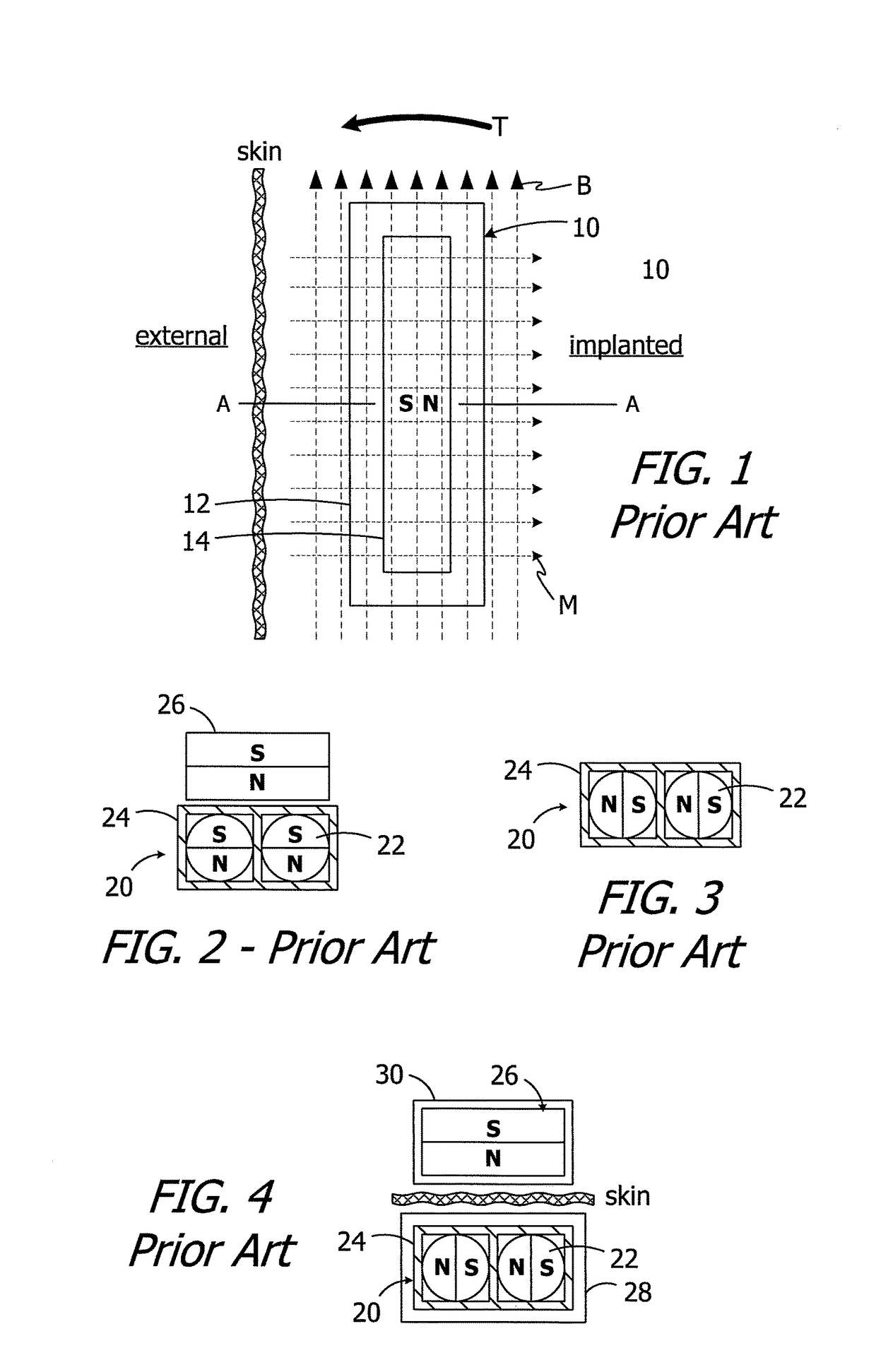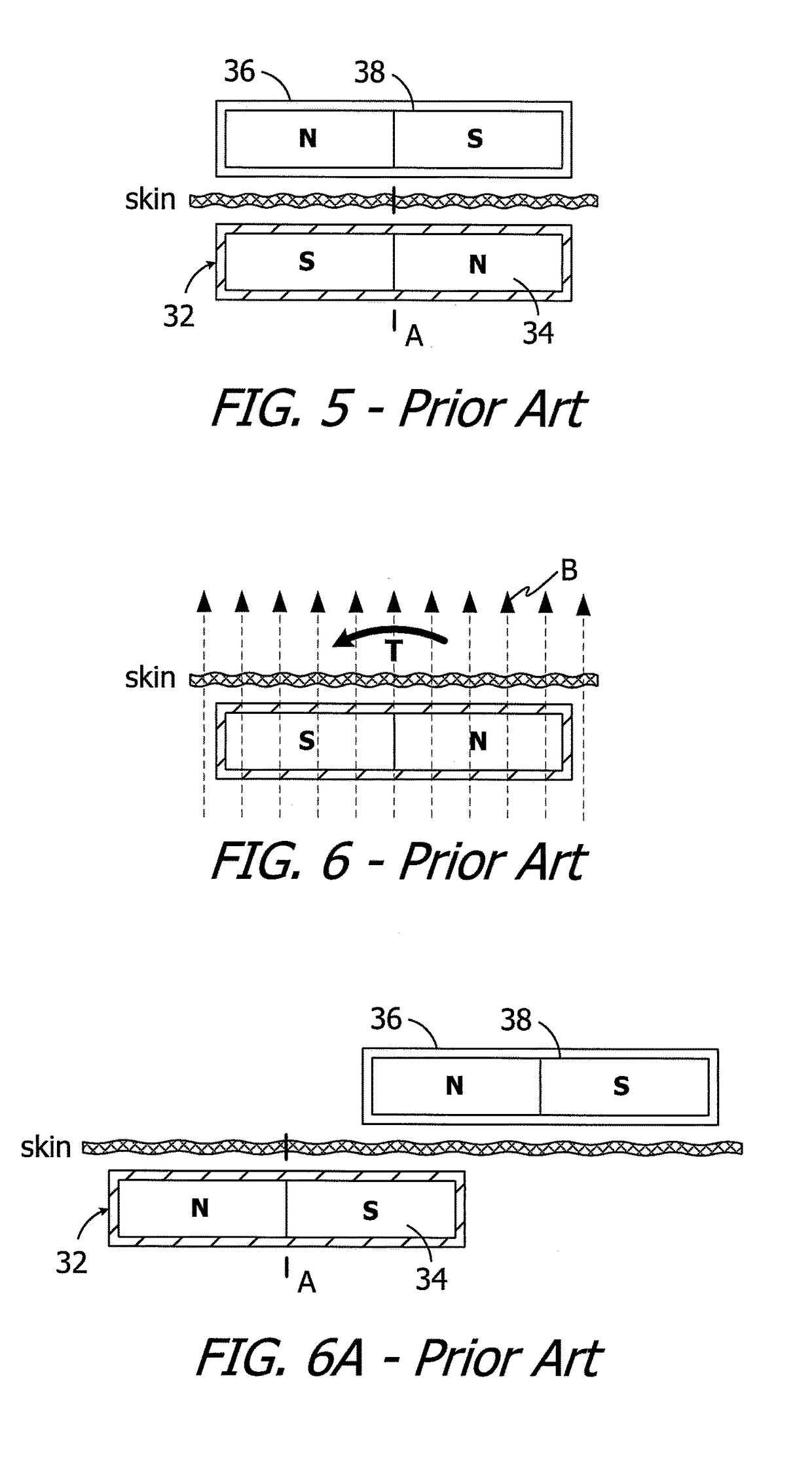Cochlear implants having mri-compatible magnet apparatus and associated methods
a magnet apparatus and cochlear implant technology, applied in the field of implantable cochlear stimulation (or “ ics”) systems, can solve the problems of skin flap, discomfort and tissue necrosis, and the magnets are not compatible with magnetic resonance imaging (“mri”) systems
- Summary
- Abstract
- Description
- Claims
- Application Information
AI Technical Summary
Benefits of technology
Problems solved by technology
Method used
Image
Examples
Embodiment Construction
[0052]The following is a detailed description of the best presently known modes of carrying out the inventions. This description is not to be taken in a limiting sense, but is made merely for the purpose of illustrating the general principles of the inventions.
[0053]As illustrated for example in FIGS. 7 and 8, an exemplary magnet apparatus 100 includes a case 102, with base 104 and a cover 106, a magnet frame 108, and a plurality of elongate diametrically magnetized magnets 110 within the frame that define a N-S direction. The magnet apparatus 100 may, in some instances, be employed a system 50 (FIG. 9) that includes a cochlear implant 200 (described below with reference to FIG. 30) with the magnet apparatus 100 and an external device such as a headpiece 400 (described below with reference to FIG. 31). The headpiece 400 includes, among other things, a housing 402 and a diametrically magnetized disk-shaped positioning magnet 410 that is not rotatable relative to the housing.
[0054]The...
PUM
 Login to View More
Login to View More Abstract
Description
Claims
Application Information
 Login to View More
Login to View More - R&D
- Intellectual Property
- Life Sciences
- Materials
- Tech Scout
- Unparalleled Data Quality
- Higher Quality Content
- 60% Fewer Hallucinations
Browse by: Latest US Patents, China's latest patents, Technical Efficacy Thesaurus, Application Domain, Technology Topic, Popular Technical Reports.
© 2025 PatSnap. All rights reserved.Legal|Privacy policy|Modern Slavery Act Transparency Statement|Sitemap|About US| Contact US: help@patsnap.com



